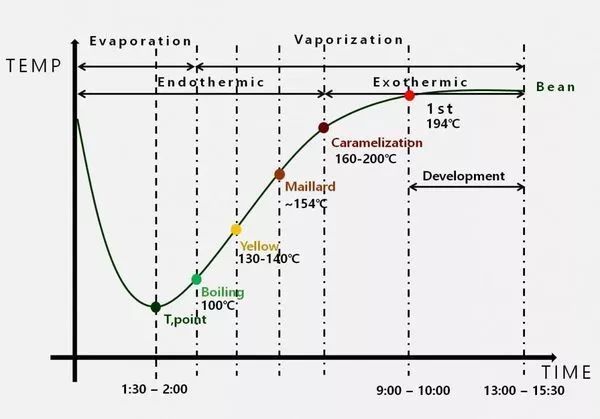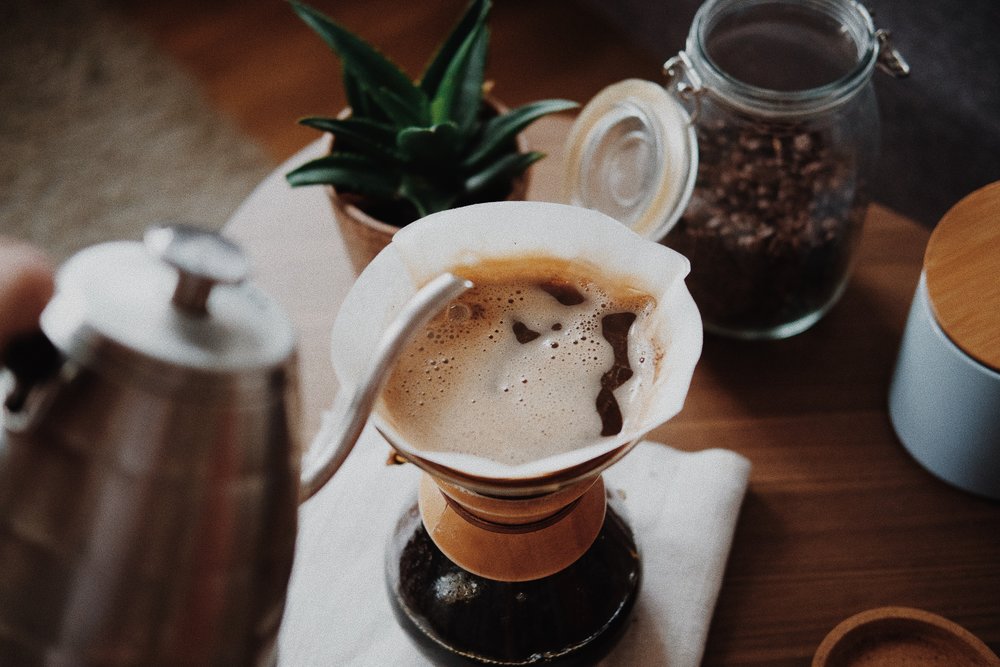Is coffee roasting really hard to get started? Let's first understand the basic concept of baked beans!
Professional coffee knowledge exchange more coffee bean information please follow the coffee workshop (Wechat official account cafe_style)
Coffee is one of the most popular drinks in today's society. Although coffee culture started late in China, it is growing rapidly every year. In just a few years, coffee has become so readily available in China, including convenience store coffee, chain coffee shops and new retail coffee. There are also many own roasting coffee shops, and there are many ways to enjoy a cup of your favorite flavor.
There are three main factors that determine the flavor of coffee: coffee raw beans, roasting and brewing. There has always been a saying in the industry that 60% of the flavor of a cup of coffee comes from raw beans, 30% from roasting, and 10% from brewing. Not to mention how the proportion is calculated and whether it is reasonable or not. But in addition to the original taste of raw beans, there is no doubt that baking has a significant effect on emphasizing flavor.
Coffee roasting can be divided into five stages:
Warm machine: preheat the coffee roaster boiler and set the temperature to the beginning of baking, which is called "bean temperature".
Dehydration period: the water content of raw coffee beans is usually 8-12%, and water is the heat conduction medium. with the increase of temperature, the free water in the beans evaporates slowly, and gas is produced inside. The so-called "dehydration" does not remove the water completely. In the process of baking, water is also a heat conducting medium. With the increase of temperature, the free water of the bean evaporates slowly, which produces gas inside, exerting pressure on the tissue of the bean and causing the bean to expand gradually. At the same time, the bean will become elastic with the change of temperature and humidity, until the water activity decreases and then returns to the hard and brittle vitrification state. At this time, a large part of the cell has been transformed into gas, and the outer layer is thinned by heating and expansion. In the case of baking too fast, the evaporation of water from bean surface and bean core is different, which is easy to make the moisture of coffee beans uneven, resulting in vitrification of the skin and undercooked bean core, resulting in astringent coffee.
Mena reaction period: when most of the free water is removed, the water activity drops below 0.7. the temperature and pressure inside and outside the bean are at about the same stage, when the bean expands rapidly, and the raw bean changes from green to white to yellowish brown. And it smells a bit like the aroma of toast, followed by the so-called Mena reaction and caramelization stage. Mena reaction refers to a series of reactions between reducing sugars in food and protein / amino acids when heated to form brown-black macromolecules, also known as flavor compounds.
Development period: turn to a darker brown, and the temperature climbs to close to 185 ℃ (different temperature measurement points, there is a deviation in the value), so you should pay attention to the coming burst sound. The first explosion is the reaction in which the carbon dioxide and water in the raw bean are expanded by heating, and it is also the key point that affects the flavor. After the beans began to burst for the first time, it entered the stage of development, the Mena reaction has entered the end, and caramelization is accelerating. During the explosion, a large amount of water vapor and carbon dioxide in the cells will be discharged in a short time, causing the bean temperature to drop slightly and the humidity to rise rapidly; when the free water is completely released at the end of the explosion, the humidity will drop again. There are many reactions taking place in a short time, so the regulation of air volume and firepower in the later stage of Mena reaction has a great influence on the final flavor of beans.
Bean cooling: when baked to the baking degree or temperature of your choice, the beans can be cooled. Cooling is the last key to coffee roasting. Reduce the heat of the coffee as soon as possible so that the flavor of the coffee can be locked in the temperature and bean condition you decide.

Basic nouns for coffee roasting
Bean temperature: as the name implies, the current temperature of coffee beans. The thermometer measures the surface temperature of coffee beans.
Temperature rising rate (Rate of Rise): referred to as ROR for short, the rising and falling temperature in minutes is affected by the adjustment of firepower, air volume and rotational speed
Moisture discharge (optional hygrometer): dewatering of beans after heating
Air temperature: the temperature of hot air discharged from the baking room
Pressure difference: pressure difference between baking chamber and environment
Temperature recovery point: after entering the bean, the curve obviously falls and then rises, that is, the time for the ROR value to change from negative to positive.
First explosion: coffee beans are heated to the state of the first burst, which can be started by two or three sounds in a row.
Explosive density: when coffee beans enter a dense burst state
End of explosion: the bursting state is coming to an end, leaving sporadic bursting sounds
Second explosion: coffee beans are heated to the state of the second burst

Baking degree and flavor
First of all, before baking, it is necessary to understand the flavors that will be produced or emphasized by various baking degrees, such as "light baking" will highlight the aroma of flowers and fruits, "medium baking" will have cream, nuts, etc., close to "medium-deep" will produce flavors such as chocolate, wood and spices, which can be used as a reference standard for flavor.
Shallow baking | dense explosion
Generally speaking, the purpose of shallow baking is to emphasize the aroma of flowers, fruit and lemon, and to highlight the original flavor of the coffee bean, but if there are unpleasant flavors such as grass flavor and bowl bean flavor, the baking degree is too shallow, which is commonly known as "unbaked".
Medium baking | end of explosion
Moderate baking has a more obvious caramelization reaction than shallow baking, which often emphasizes drupes, cream, peanuts, etc., and the sweetness will increase with it, while the flavor of light baking becomes less obvious, such as the fragrance of flowers is not easy to feel in moderate baking.
Medium and deep baking | near second explosion
Deep roasting is the most familiar coffee flavor in China, and it is not the best choice for flavor enjoyment and health. Medium and deep roasting will highlight chocolate, spices, wood and other flavors. Mantenin is our most common coffee item baked in medium and deep roasting. The charming wood and spice flavor, the supple taste without sour or bitterness, is the classic flavor of Mantenin, and it is also the characteristic of medium and deep baking.
END
Important Notice :
前街咖啡 FrontStreet Coffee has moved to new addredd:
FrontStreet Coffee Address: 315,Donghua East Road,GuangZhou
Tel:020 38364473
- Prev

[novice teaching] you only need to master 10 steps and tips to make a good coffee!
Professional coffee knowledge exchange more coffee bean information Please pay attention to the coffee workshop (Wechat official account cafe_style) nowadays coffee has become an indispensable part of modern life, more and more people are beginning to pay attention to the texture of life and the spiritual wealth brought by hand work, gradually abandoning the traditional three-in-one instant coffee and enjoying the pleasure of making coffee by hand. As a matter of fact, it is difficult to say by hand.
- Next

How should I drink coffee with hanging ears? Hang-ear coffee brewing steps to explain what is hanging-ear coffee?
Professional coffee knowledge exchange more coffee bean information Please pay attention to the coffee workshop (Wechat official account cafe_style) hanging ear coffee bag is a necessary product for home travel to and from work, in addition to satisfying people's daily caffeine intake, it can also satisfy people's small desire to make their own coffee in a variety of environments STEP. 01 open the package and put the ear frame on the coffee cup before opening the filter bag, please clap first
Related
- Beginners will see the "Coffee pull flower" guide!
- What is the difference between ice blog purified milk and ordinary milk coffee?
- Why is the Philippines the largest producer of crops in Liberia?
- For coffee extraction, should the fine powder be retained?
- How does extracted espresso fill pressed powder? How much strength does it take to press the powder?
- How to make jasmine cold extract coffee? Is the jasmine + latte good?
- Will this little toy really make the coffee taste better? How does Lily Drip affect coffee extraction?
- Will the action of slapping the filter cup also affect coffee extraction?
- What's the difference between powder-to-water ratio and powder-to-liquid ratio?
- What is the Ethiopian local species? What does it have to do with Heirloom native species?

